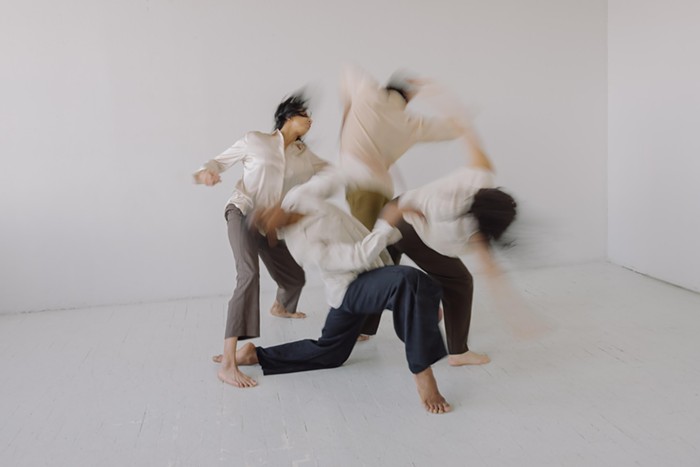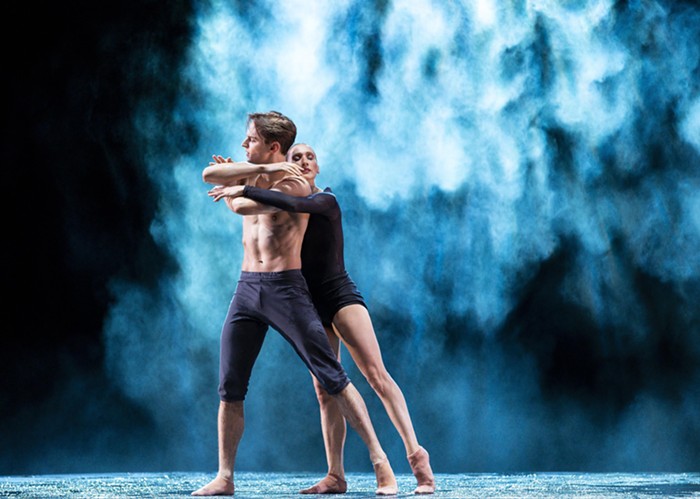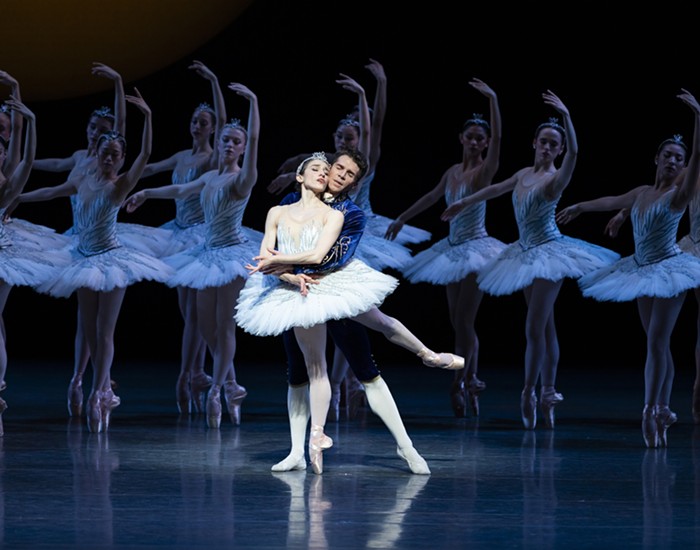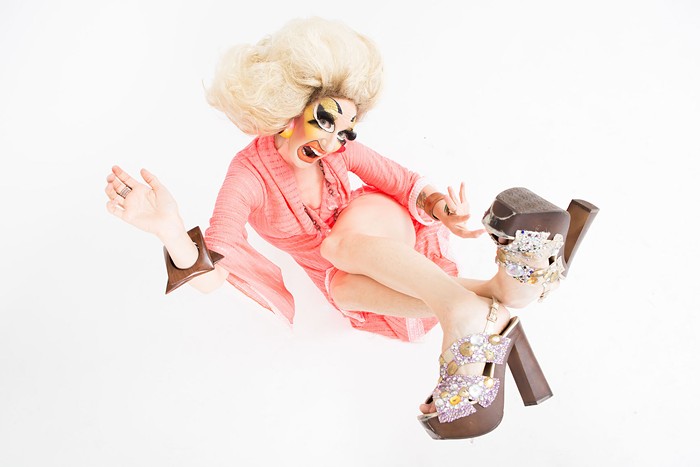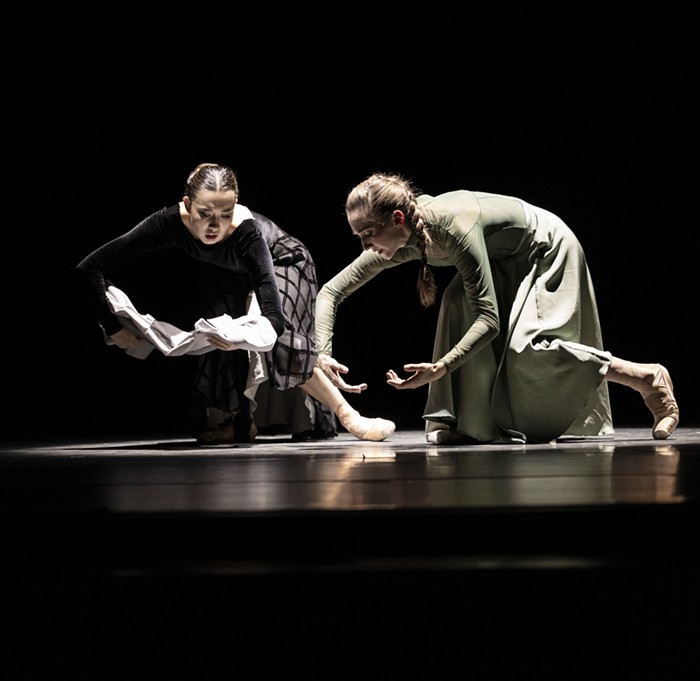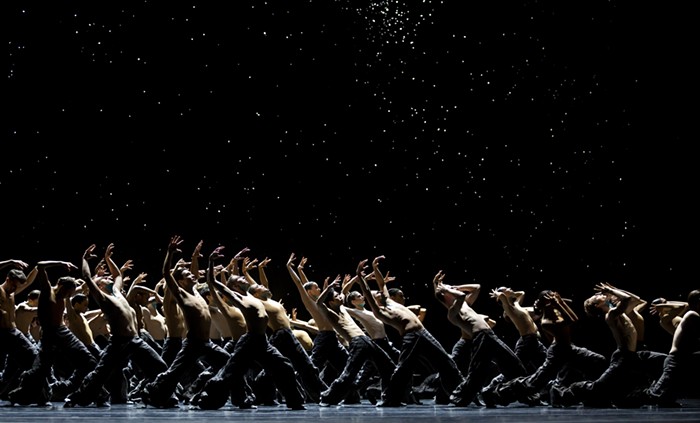
I recommend Pacific Northwest Ballet's production of Sergei Prokofiev's Cendrillon for the same reason I recommend taking ecstasy: It's eye-dazzling and basically fun, so long as you don't think about it too hard.
The ballet is a springy, costume-forward romp complete with the occasional gold-glitter waterfall and tempered by moments of deeply felt love-loss. The pomp and play of it all thwarts, at least for a few hours, the constant assault our 45th president has been waging against our senses, and that's reason enough for me to try and score a cheap ticket for the run this weekend.
That's not to say there aren't adult themes to consider. As he does with Roméo et Juliette, which ran last year at PNB, choreographer Jean-Christophe Maillot shapes the popular fairy tale in order to extract maximum complexity.
Do you remember the story? Cinderella's mom is dead, and now she spends her days grinding lentils in a giant mortar. The Father is torn between trying to get along with his new family—The Stepmother and The Sisters, who bully their new kin—while still honoring his old one. In the midst of that familial tension, The Fairy swoops in with an invitation to the Prince's ball. Boy meets girl. Boy loses girl. Boy travels to find girl. Nobody else does it for him. Eventually they find each other. Fin.
If you see the dead mother, the embattled Cinderella, and the Happily Ever After Cinderella from the perspective of the Father and Cinderella, you can convince yourself that the show is ultimately about the particular way grief transforms time. The griever lives in a complete fantasy, a combination of nostalgia for the dead loved one and a projection of a spotless future with them.
In The Father's/Cinderella's case, this fantasy manifests in form of The Fairy, a figure of control in a world governed only by chaos. Cinderella can only heal the pain of the lost mother (and the father's lost wife) by falling in love with someone and creating a family that mirrors the lost one, a task The Fairy facilitates. The prominence of mirror imagery (and mirroring dance scenes) as well as the intrusion of a ballet-within-the-ballet reinforces this idea by making fun of it: grieving has nothing to do with the dead and everything to do with the griever, who perceives others, however metaphorically, as characters who play a part in one's life and not the other way around.
And yet this nostalgia/spotless future fantasy is so powerful! Maillot and his stagers (Bernice Coppieters, Bruno Roque, Asier Uriagerka) enact this idea most successfully, for me at least, in the way they handle the ballet's many seductions. The most sensual moments occur when dancers slide a hand or foot only inches away from another's body, causing them to move their body under the hand or foot's spell.
At one point, Cinderella bends down and draws up from the ground her prone Prince with a kiss. He floats up to her, as if her lips were magnetized. These moments foreground the old binary that drives the ballet's central fantasy: someone's absence makes you feel their presence more palpably and vice versa, an emotional truth that sexual desire shares with death.
There's also something in there about foot fetishes, which is interesting in that dancers are always dancing, and so walk around on some of the most battle-worn (and therefore most attractive? I don't know how it works) feet in the performance business.
Anyway, all of those abstract ideas float around the story and never quite resolve for me, but there's no doubting the pure pleasure of Jerome Kaplan's outrageously good costumes, Ernest Pignon-Ernest's clever set, Noelani Pantastico's warm and seemingly effortless barefoot/glitterfoot performance in the titular role, and Lesley Rausch's reptilian prowess and precision as The Stepmother.
I do have one critique. Toward the end of the show, Maillot (or one of the stagers?) makes a bit of a "French choice," which is a phrase I just invented as a euphemism for European misogyny. Basically what happens is *spoiler alert* the Father chokes The Stepmother with his dead wife's dress. The violent act, silky and satiny as it may be, shocks in the context of a pretty light if occasionally forlorn ballet. But the fucked up thing is that the Stepmother, after being rightly surprised by this act of aggression, ends up instantly forgiving him and resting on his shoulder. Makes you go, "Hmmm, but I thought she was a powerful and kinda mean dinosaur?" Otherwise, the show's great. Go see it!

